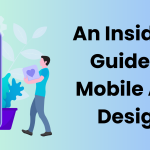Unless you’ve been living under a rock, you must be genned up on the dynamic digital landscape of 2023. On the one hand, we are progressing by leveraging AI technologies that support data-driven designs, automation, and comprehensive personalized solutions. On the other hand, we are witnessing new challenges and problems in many aspects. User Experience (UX) design is one of them.
The UI/UX design is one of the most crucial parts of an organization’s success. UX designers work passionately to ensure that users have an enchanting time while interacting with websites and apps. Moreover, they know that UX design acts as a deciding factor to make or decline a purchase. Many UX designers are afraid of the fact that user experiences are highly influenced by the digital revolution and a hundred other factors. Hence the upcoming challenges are inevitable.
In this article, we’ll walk you through some important challenges in UX development, what problems do UX designers solve, what practical strategies they adopt to overcome UX challenges, and lastly, how UX professionals tame UX/UI solutions around the world.
Let’s jump in the basic concept of UX/UI design before delving into challenges!
What is meant by UX and UI Design – Stand Alone & Together?
User Experience (UX) and User Interface (UI) fall under the design category of a website. They are either used together or interchangeably, but are slightly varied in their purpose.

UX involves the user’s entire journey with a product or service. It refers to the feel a user experiences with a product, how the product is introduced, and what elements kept the user hooked. These can be user manuals, FAQs, blogs and other advertising materials. UX design is the process of developing, designing, and upholding engaging user interactions with a product or service.
The actual components that enable users to interact with a website or app are referred to as user interface (UI) elements.
UI elements can be buttons, widgets, pages and interfaces. The purpose of both UI and UX designs is to deliver positive and polished user experiences.
Common UX Design Challenges & Their Solutions – Explained
Here is a list of some common but vital challenges that UX designers face. We have provided solutions to solve problems as soon as they erupt or be mindful of them even beforehand. Let’s read on!
1. The Mobile Mayhem: Designing for Various Screens & Platforms
Challenge: The digital world is vast, filled with devices of all shapes and sizes. The tech is continuously evolving with more screens, shapes and platforms. We have laptops, tablets, mobile screens, and then there is iOS, Android and web browsers. Designing a seamless experience across these varied screens and platforms can be really daunting. But it is essential to deliver a consistent and smooth user experience across all devices and platforms.
Solutions:
To combat this challenge, UX designers can adopt the following solutions:
- Embrace the magic of responsive design. Create layouts that adapt gracefully to different screen sizes.
- Prioritize content and features based on user needs, making sure the essentials are accessible, no matter the device.
- Conduct user testing across various devices to ensure everything is on point to deliver a user-friendly experience.
- Take into consideration users’ location, background, and device information to offer personalized designs.
2. The Battle of User Engagement: Hooking and Holding Users
Challenge: UX designers come across another challenge to engage users and make them stay longer on the websites or mobile apps. The longer they stay, the more likely it is that they will buy something. Users interact and engage with a product or service that is easy to navigate and functional by remaining on the website and using it.
Solutions:
Here’s what you can do to enhance user engagements on your product or service:
- Use micro-interaction interfaces wisely. You should create a design by keeping the color scheme, brand image, and typography in mind.
- The delightful animations and responses that make users feel like they’re having a real conversation with your app – are also game changers.
- Research and analyze user preferences and use design principles that meet the needs of the users.
- Make a clear design hierarchy that helps users navigate in a simple way. Moreover, remember to incorporate your brand image in your designs.
3. Slow Loading Times Lead to Skidding Away of Visitors
Challenge: Slow-loading websites and apps are a great challenge for UX designers. They can make or break the perception of a website. Visitors will view a website as responsive if it loads quickly on their computer or mobile device. However, if it takes too long, it could become unresponsive and users might go to other options.
Solutions:
You can certainly optimize those load times by following these strategies:
- By compressing images, minimizing code, and spreading content evenly to ensure users don’t fall back due to constant waiting. A website that appears in the blink of an eye is surely going to stay forever.
- Use monitoring tools to gauge loading speed and suggest improvements.
4. The Labyrinth of Navigation: Lost in Menus
Challenge: Ever felt like you’re wandering through a jungle while navigating through a website. The UX design elements sometimes feel like a havoc to users as they make navigation a real hassle.
Solutions:
- Craft a user-friendly navigation map. Use clear labels, logical groupings, and intuitive icons to guide users on their adventure.
- Remember, less is often more – don’t overcrowd your menus.
- Make it simple, straightforward and easy to access.
5. Accessibility & Inclusivity: Design for All
Challenge: Another crucial challenge for UX designers is to make their digital product or service inclusive of and accessible to all. The design should be welcoming to all, regardless of any disabilities. Users may have different physical needs, such as hearing or visual disabilities or they may come from diversified backgrounds, culture, age, preference, gender. Therefore, designers must be careful that the designs they create should be understandable by all users.
Solutions:
To address the problems of accessibility and inclusivity, UX designers must accomplish following guidelines:
- Ensure your design works with screen readers, supports keyboard navigation, and uses color contrasts that even a colorblind wizard could appreciate.
- Use accessibility and inclusivity design principles and standards
- Conduct pilot testing with potential audiences with disabilities and various backgrounds – to make sure that they can easily comprehend your design elements.
- Avoid using technical terms and jargons (and only use where essentially needed).
- By crafting an experience that everyone can enjoy, you’ll earn a reputation of a superior UX designer.
Concluding Words
So, there you have it – designers come across umpteen challenges during the course of their work. Some are avoidable, but many become sores if not treated on time. As a UI/UX designer, you must be aware of emerging needs of digitization, changing technical trends, and the evolution of cutting-edge technologies. This awareness will help you overcome the challenges in a more strategic way. As you traverse the UX design realm, armed with these solutions, your digital creations will strive to be enchanting, user-friendly, and engaging – just like you wish them to be!







